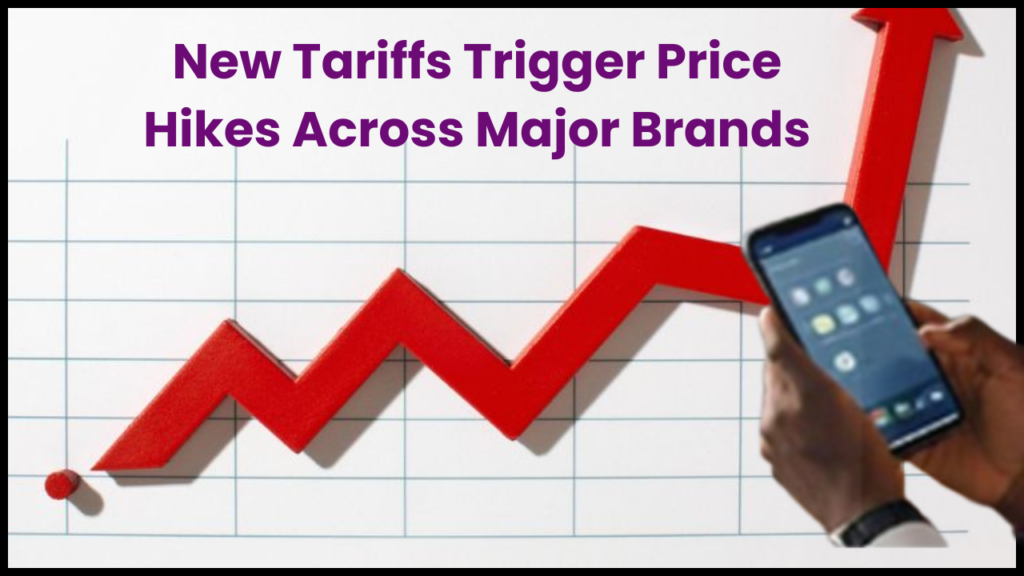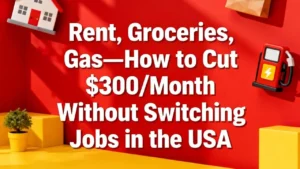
The topic of “New tariffs trigger price hikes across major brands” is rapidly becoming a central concern for both consumers and industry professionals. Whether you’re a family trying to manage your monthly grocery bill or a procurement officer monitoring supply chain costs, recent trade decisions are shaping your budget in real time—and likely for the foreseeable future.
In 2025, the U.S. government rolled out a new set of tariff increases, affecting a wide array of imported goods ranging from electronics and luxury automobiles to basic food staples. The primary objective behind these new policies is to stimulate domestic manufacturing and reduce dependency on foreign supply chains—particularly in critical industries. However, the short-term fallout is stark: brands are passing these extra costs on to customers, which is resulting in a noticeable surge in retail prices nationwide.
Quick Summary
- New U.S. tariffs of up to 25% have been imposed on hundreds of products, including goods from China, Mexico, and Europe.
- Leading brands such as Apple, Ferrari, Best Buy, and Walmart have begun increasing prices in direct response.
- Retailers are warning of further hikes as existing inventory runs out and new, tariff-impacted stock arrives.
- Consumers should expect 10–20% price increases on everything from electronics and fashion to grocery items like fruits, coffee, and canned goods.
- Visit the U.S. Trade Representative (USTR) website for official tariff details, affected product lists, and policy updates.
Understanding the Tariffs: What Changed and Why It Matters
A tariff is essentially a tax levied by a government on imported goods. The goal is to make foreign products more expensive, thereby encouraging consumers and companies to buy locally produced alternatives. In theory, this strengthens domestic industries. However, in practice, when these tariffs are significant and broad-reaching—as in this case—they tend to ripple through the entire supply chain.
A Simple Example
Let’s say you’re planning to buy a smartphone manufactured in Asia. If the import tariff increases the wholesale cost by 25%, your $800 phone might now retail for $1,000 or more. It’s not just luxury items feeling the impact—even basics like imported produce or clothing made overseas can carry a higher price tag.
Why It’s Happening Now
According to Reuters, these tariffs are part of a broader geopolitical and economic strategy aimed at reducing American reliance on strategic imports such as microchips, electric vehicles, and healthcare-related products. While this may boost U.S. manufacturing in the long run, the current outcome is inflationary for consumers.
Which Brands and Products Are Seeing Price Hikes?
Electronics and Tech
- Apple is facing pressure to raise prices on iPhones and MacBooks not assembled in the U.S. Analysts predict increases of $150–$300 per high-end model.
- Best Buy has issued warnings about across-the-board price increases on televisions, laptops, and smart home devices due to higher import costs.
Retail and Consumer Goods
- Walmart executives say items like imported produce, small appliances, and toys have all seen double-digit percentage cost increases.
- Target has begun revising pricing strategies on apparel, electronics, and home goods, citing supply chain disruptions and tariff exposure.
Fashion and Luxury Items
- Hermès and Gucci have responded with exclusive U.S. price adjustments, citing the rising cost of importing leather goods and textiles.
- Ferrari and Lamborghini dealers have announced 5–10% price hikes on U.S.-bound vehicles, effectively raising sticker prices by tens of thousands of dollars.
Groceries and Beverages
- Fruits and vegetables like avocados, lettuce, tomatoes, and bell peppers are now 15–25% more expensive due to tariffs and seasonal scarcity.
- Coffee prices have surged due to a combination of import duties, climate disruption, and rising fuel costs involved in transportation.
According to Business Insider, café owners are passing these costs on to consumers through higher menu prices and smaller portion sizes.
How Are Consumers Responding?
American consumers are adapting quickly, using a blend of digital tools, financial strategies, and changes in shopping habits to cope with rising prices.
1. Switching to Local Brands
More people are gravitating toward U.S.-made alternatives. Whether it’s furniture, clothing, or groceries, domestic products are becoming more attractive—not only due to price but because of supply reliability.
2. Choosing Store Brands Over National Brands
Retailers like Costco, Aldi, and Kroger are seeing increased sales of their in-house labels, as customers trade down from premium imported brands to more affordable, homegrown versions.
3. Delaying or Canceling Major Purchases
Big-ticket items like new cars, smartphones, and large appliances are being put on hold. In some cases, shoppers are turning to secondhand marketplaces or refurbished products to offset price hikes.
4. Couponing and Cash-Back Strategies
Digital tools like Rakuten, Capital One Shopping, and credit card rewards programs are gaining popularity. Households are looking for every available avenue to stretch their spending.
5. Bulk Buying and Subscription Services
Some are turning to warehouse clubs like Sam’s Club or Costco, buying non-perishable items in bulk. Others are using subscription services for things like coffee, cleaning products, or even produce to lock in lower prices.
What Can You Do to Manage Costs?
Here’s a step-by-step guide for managing your expenses and adjusting to the changing landscape:
Step 1: Research and Compare Prices
Use online platforms like Google Shopping, CamelCamelCamel, and Slickdeals to track price history and find the best current deals. Consider setting price alerts for frequently bought items.
Step 2: Buy Local and Seasonal
Support farmers markets, community-supported agriculture (CSA), and regional producers. These options often offer fresher, less expensive alternatives to imported items.
Step 3: Stack Coupons and Rewards
Many apps and retailers allow you to stack store discounts, manufacturer coupons, and loyalty points to maximize savings. Combine these with cashback offers on credit cards when possible.
Step 4: Time Your Big Purchases
Wait for major sale events like Black Friday, Labor Day, or Memorial Day. Also, look into refurbished or open-box items, especially for electronics.
Step 5: Monitor Official and Financial News Sources
Subscribe to alerts from the USTR, Bloomberg, and The Wall Street Journal to stay informed on policy changes that might affect your budget.
Step 6: Adjust Your Budget
Make sure your household or business budget reflects higher expected costs. Create emergency funds or reallocate resources to accommodate these changes.
Overall Summary
New tariffs are already triggering price hikes across major brands, affecting everyday life in ways that many Americans are only beginning to understand. From electronics and luxury cars to groceries and household essentials, inflation driven by import taxes is reshaping how we spend, save, and invest.
While these policies may help bolster domestic manufacturing over the long term, they come with a cost that is immediately felt at the checkout line. Fortunately, with smart shopping strategies, informed decisions, and adaptive budgeting, consumers can navigate this new economic environment successfully.
FAQs About New Tariffs Trigger Price Hikes Across Major Brands
Q1: What exactly is a tariff?
A tariff is a tax imposed on imported goods by a country’s government, often used as a policy tool to protect domestic industries or exert economic pressure.
Q2: Do consumers really feel the impact?
Yes. While tariffs are initially paid by importers, those companies raise prices to protect profit margins, which directly affects retail costs for shoppers.
Q3: Which categories should I avoid for now?
Electronics, automobiles, luxury fashion, and non-local produce are currently the most affected. If you can delay purchases in these areas, you might save money later.
Q4: Are there any signs of relief soon?
Policy analysts suggest it could be months or even years before tariff levels are adjusted. Ongoing trade negotiations will determine the timeline.
Q5: What if I run a small business?
Evaluate your supply chain. Consider sourcing from domestic wholesalers or renegotiating with suppliers to lock in pre-tariff pricing. You may also want to adjust your pricing or service structure to remain competitive.









No Comments Yet
Be the first to share your thoughts.
Leave a Comment